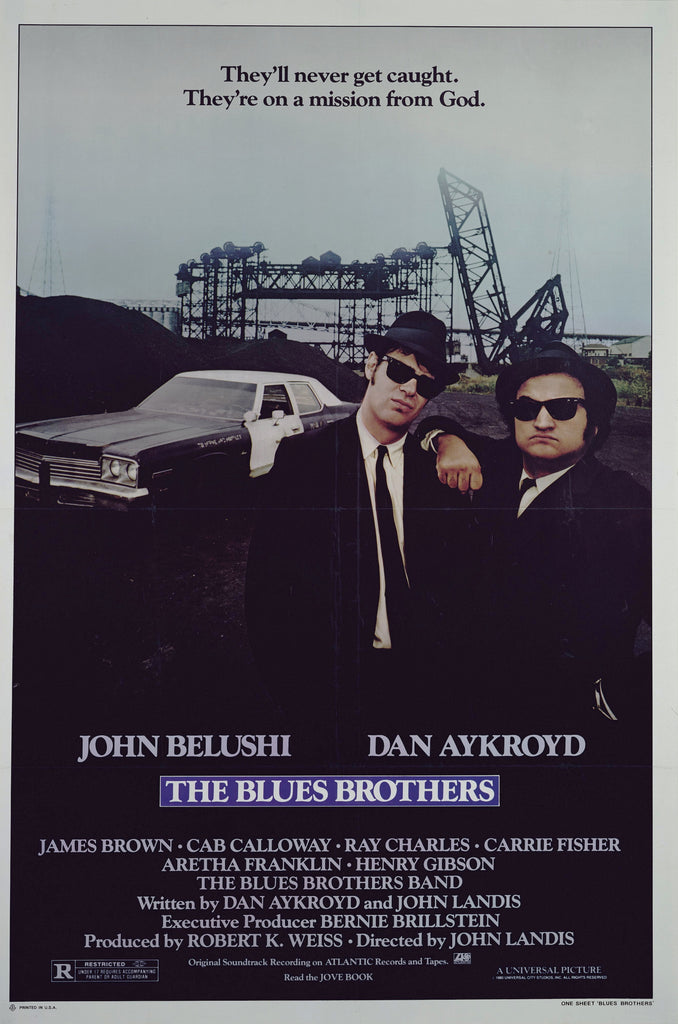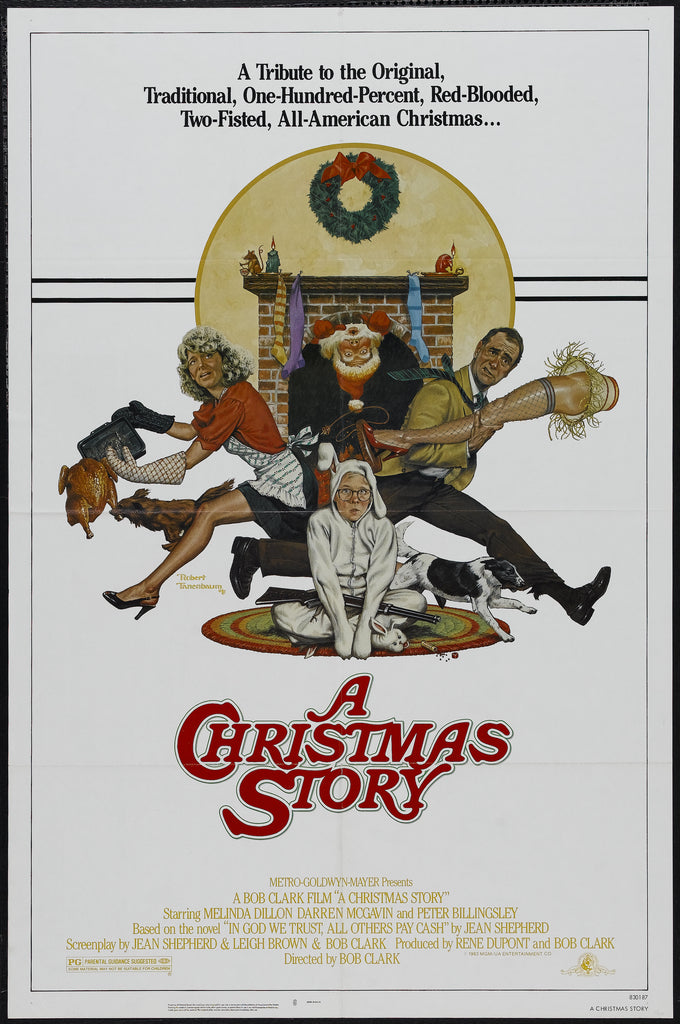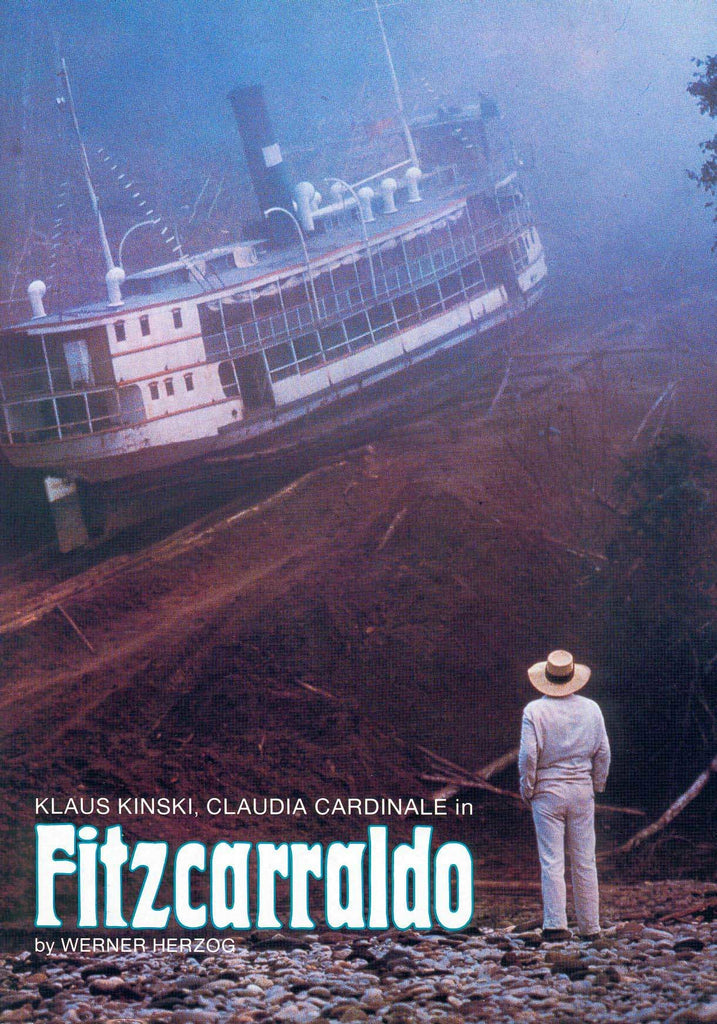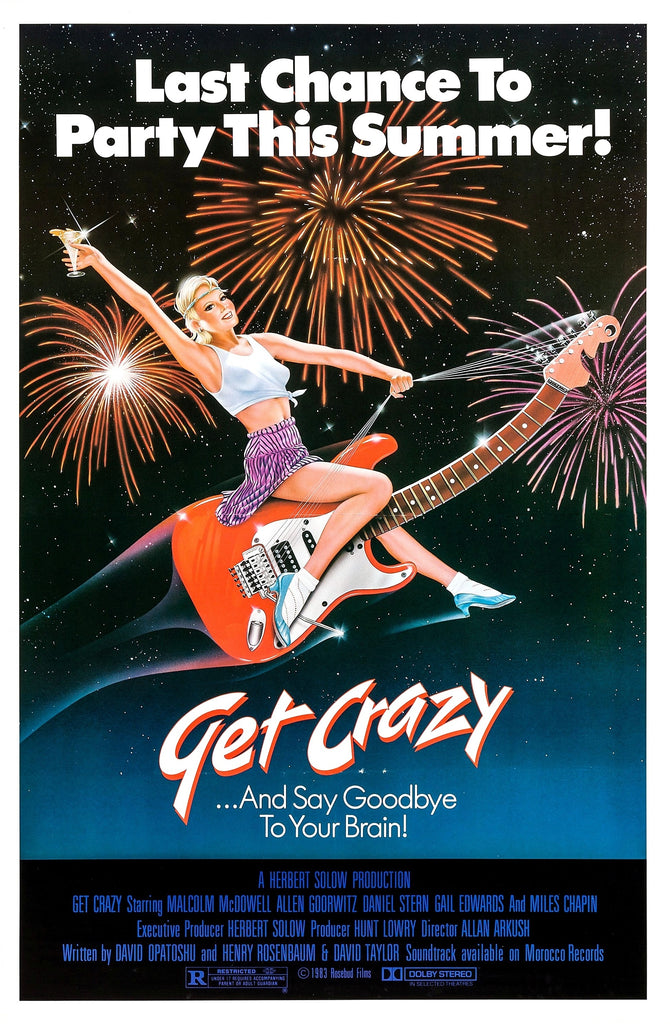
In May 1977 a little movie called Star Wars came out and, along with its eagerly-awaited sequels in the early ‘80s, developed one of the biggest cult fan bases in the galaxy. Now the franchise is in the clutches of an evil empire it seems terribly corporate, making it easy to forget that fan-love for the original trilogy was the first big underdog victory for the nerds which made a massive contribution to geek culture of today.
Another major leap forward (or should we say fast forward) for fandom in the ‘80s was the rise of Betamax and VHS, allowing us to watch whatever took our fancy whenever we felt like it. What many of us wanted to watch was scary movies and horror became the dominant mode for cult flicks, with the “video nasty” hubbub only adding to the genre’s lurid appeal.
Even for non-horror fans, there were plenty of weird and wonderful movies to choose from, and the proliferation of home rental helped the ‘80s become the first cult decade. We’re still re-watching it today with endless reboots, remakes, and (increasingly handed down) nostalgia. Not that I have a problem with that, because the ‘80s were a golden era for anyone with access to a video club card. Let’s take a look…
A is for… AN AMERICAN WEREWOLF IN LONDON
After their Universal Studios heyday of the ‘40s, werewolves had a pretty quiet few decades before they ripped their way back onto our screens in the ‘80s. An American Werewolf in London from John Landis had a huge hand in this resurgence with its slick blend of horror, comedy, romance, and moon-themed songs on the soundtrack.

The film also featured some astonishing Oscar-winning effects from Rick Baker; the stunning full-body metamorphosis set the benchmark for all subsequent werewolf transformation scenes. It has never been bettered, although Joe Dante’s The Howling (also released in 1981) and Neil Jordan’s The Company of Wolves (1984) sure gave it their best shot.
B is for… THE BLUES BROTHERS
Prior to his werewolf movie, it’s fair to say John Landis was already on a bit of a roll with two whopping cult favourites, National Lampoon’s Animal House and The Blues Brothers. He’s a hugely influential figure in ‘80s cult movies; not only did American Werewolf help reinvigorate the fortunes of classic monsters, his non-horror hits contributed to the trend of Saturday Night Live stars making their way to the big screen, peaking in 1984 when the box office was dominated by SNL-led smashes Ghostbusters and Beverly Hills Cop.

In The Blues Brothers, John Belushi and Dan Aykroyd got the chance to expand their SNL musical skits to a full feature; a bloated, noisy, overlong romp that features one of most destructive car chases ever put on film, with over 100 vehicles trashed. Still, the two stars’ chemistry as Jake and Elwood Blues is irresistible, and the movie includes brilliant cameos from soul legends like Aretha Franklin, Ray Charles, and Cab Calloway.
The SNL influence on cult comedy would continue with Chevy Chase and Bill Murray (Caddyshack), Steve Martin (The Man With Two Brains), and Martin, Chase, and Martin Short (Three Amigos!) to name but a few.
C is for… A CHRISTMAS STORY
Canadian director Bob Clarke has an unusual place in the Christmas movie canon. Not only did he establish many of the slasher film tropes we now take for granted in his brilliantly bleak Black Christmas, he went on to crash TV schedules with his folksy and very funny family festive tale, A Christmas Story.

If It’s A Wonderful Life became ubiquitous thanks to cable networks exploiting a copyright lapse to run it whenever they could around the holidays, Clarke’s movie has gone even further; starting in 1997, TNT began the tradition of 24-hour A Christmas Story marathons.
D is for… DAVID CRONENBERG
With the possible exception of John Carpenter (discuss) no other cult director had a better ‘80s than Bob Clarke’s compatriot, David Cronenberg. The Canuck auteur has a reputation as a chilly peddler of gross body horror, but his output during the decade demonstrated his range and, surprisingly, a lot of heart, too.

His telekinetic horror thriller Scanners and Videodrome, often considered his masterpiece, has a lot to do with that knee jerk reaction when Cronenberg’s name comes up, and understandably so. The head-popping scene in the former is one of the great kills of the ‘80s, while Videodrome’s deep dive into sleaze, sadomasochism, and obsession is one of those “shower afterwards” movies.
Cronenberg revealed a far more sensitive side with The Dead Zone, one of the very best Stephen King adaptations, and The Fly, focusing on a touching romance amid all the gloopy metamorphic mayhem. With Dead Ringers also giving Jeremy Irons a career-best dual role as identical twins, the director built a body of ‘80s work to rival that of the Master of Horror.
E is for… EVIL DEAD
Check out any list of cult actors and you’ll find Bruce Campbell, aka the Almighty Chin, usually ranks toward the top of the pile. He has long been a popular figure at fan conventions and started his ascent when Sam Raimi burst onto the scene with The Evil Dead, a textbook example of what you can achieve with no money if you have a little talent and a wicked imagination.

In Britain, the film fell foul of the Video Recordings Act of 1984, branded a “Video Nasty” and banned, which only added to its cult appeal. In truth, there is a maliciousness to it that the sequel/remake Evil Dead II: Dead by Dawn corrected, a movie that was both scarier and funnier than the original.
Evil Dead II cemented Campbell’s status as a cult icon. Compared to his relatively restrained turn in the first film, he was given full rein to cut loose with a slapstick performance that ranks alongside the best of Buster Keaton or Laurel and Hardy. Two unforgettable moments sealed the deal: getting beaten up by his own possessed hand before lopping it off with a chainsaw (“Who’s laughing now?”) before affixing said power tool to his amputated stump (“Groovy!”)
Raimi and Campbell paired up for the third film in the franchise, Army of Darkness, before Campbell once again reprised the role of dim but big-hearted hero in the Ash vs Evil Dead TV series, and his cult credentials were underlined playing an ageing Elvis in Don Coscarelli’s Bubba Ho-Tep, where he battled a cowboy mummy.
F is for… FITZCARRALDO
Often parodied for his navel-gazing philosophical ramblings and existential musings, Werner Herzog is a fearless filmmaker who has spent almost five decades exploring mankind’s relationship with nature and the obsessions of mavericks like himself. Fitzcarraldo is perhaps his most famous fictional piece, a quixotic quest deep into the Amazonian rainforest mirrored by the director’s own art-imitates-life (or vice versa) adventures making the movie in the first place.

It’s the story of a rubber baron who wants to build an opera house in the middle of the jungle and, to that end, is compelled to face hostile tribes and drag his steamboat across a mountain. To achieve the desired effect, Herzog teamed up with his frequent muse/nemesis Klaus Kinski and enlisted real remote tribes to lug a real boat up a hill.
By all accounts, things got crazy, not least with the director having to deal with a bona fide madman like Kinski in such testing circumstances. The ordeal was captured in Les Blank’s excellent making-of documentary Burden of Dreams, while Herzog himself detailed his love-hate relationship with the mercurial actor in My Best Fiend.
G is for… GET CRAZY
Speaking of getting crazy, we arrive at Allan Arkush’s bonkers rock ‘n’ roll spoof that I only found because I was struggling to find a suitable “G” for this article.
I really lucked out on this one, and it has become a new cult favourite. Arkush (Rock ‘n’ Roll High School) was disappointed with the film, lamenting “it has 3000 punchlines but only 1000 jokes.” Therein lies much of the joy of this high-spirited “putting on a show” concert musical; it peppers the screen with so many sight gags and slapstick bits of business that it makes a Zucker-Abrahams-Zucker joint look like an Wes Anderson-style exercise in deadpan.

Set mostly over the course of a New Year’s Eve concert, Get Crazy is both slapdash (the mic boom is seen so much it deserves screen credit) and spectacular, with raucous concert footage that looks like everyone involved was genuinely off their tits and having the time of their lives.
It’s a great feel-good party movie with plenty of drug humour to add to its cult appeal, and deserves far more love. I simply can’t understand why it hasn’t built the same kind of following as Walter Hill’s Streets of Fire. If you haven’t seen it already, get on it!
H is for… HORROR ICONS
The horror boom of the ‘80s became dominated by three unlikely poster boys; Michael Myers, aka The Shape, from the Halloween movies; hulking Jason Vorhees from the Friday the 13th series (although he wouldn’t don his famous hockey mask until the third instalment); and Freddy Krueger in A Nightmare on Elm Street and its sequels, played with ghoulish gusto by Robert Englund.

The law of diminishing returns hit each franchise hard but that did little to affect their cult appeal, and the increasing reliance on gnarly novelty kills and dumb slasher tropes was largely responsible for Scream in the ‘90s and other inferior meta-spoofs of the genre.
The sheer proliferation of sequels and reboots have dulled the primal terror of the trio’s gory exploits; Myers was an inescapable shadow of pure evil, Vorhees a blunt-force homicidal maniac from beyond the grave, and Krueger a child killer who tormented his victims in their dreams. Yet if it wasn’t for the inferior cycle of movies that followed their far superior originals, they may never have become the cult icons they are today.
I is for… INVASION U.S.A.
Away from horror, the ‘80s was also the era of the lunkheaded action hero. While bitter rivals Sylvester Stallone and Arnold Schwarzenegger became huge international stars and successfully crossed into the mainstream, also-ran Chuck Norris resolutely remained the king of B-movie butt-kicking before a Second Coming in the 21st century as a successful meme.

Norris had a long background in martial arts before making his breakthrough in movies as Bruce Lee’s nemesis in The Way of the Dragon. Further roles followed before he morphed into a one-man-army action star during the ‘80s with a string of jingoistic flicks like Missing in Action, The Delta Force, and Invasion U.S.A.
Like John Milius’s paranoid right-wing fantasy Red Dawn, the latter saw Chuck taking on Communist invaders as they sought to take over the United States. Norris’s Commie-repelling powers even carried over into real-life; the excellent documentary Chuck Norris vs Communism detailed how bootleg tapes of his adventures had a hand in toppling Nicolae Ceausescu’s totalitarian regime in Romania in the late ‘80s.
J is for… JOHN CARPENTER
I have already covered John Carpenter’s ‘80s heyday in greater detail on the blog, but it would be churlish to leave him out from this list. No other director is as synonymous with the cult movies of the decade, from The Thing, which bombed at the box office but has become known as one of the greatest sci-fi horrors ever made, to Big Trouble in Little China, another commercial failure that has developed a loyal following largely thanks to VHS (myself included).
K is for… KIDS ON BIKES
Tweens and teens also got in on the action big-time in the ‘80s, spawning an unofficial genre without which Stranger Things might not exist: Kids on Bikes. The quintessential kids-on-bikes moment came in E.T. the Extra-terrestrial, culminating in that famous shot of flying BMXs soaring across the face of the moon, and there were plenty of other cycle-related adventures for the young ‘uns to come.

Family-oriented movies have come a long way in the intervening years, with the CGI crowd pleasers of Pixar, Laika and the rest seeming a world away from the salty, potty-mouthed, rough-and-tumble antics of their live-action ‘80s counterparts.
The Goonies, with its fat-shaming, fiendish booby traps, and dastardly villains in pursuit of the treasure, was basically Richard Donner’s Indiana Jones movie for kids, while The Monster Squad set a group of teens against the big guns of Universal horror: Count Dracula, Frankenstein’s Monster, the Mummy, a Wolf Man, and a Creature from the Black Lagoon-like fishman. Further gateway horror for the impressionable could be found in The Gate, starring a baby-faced Stephen Dorff as a latchkey kid who finds a portal to Hell in his back garden.
L is for… LIQUID SKY
Even by the standard of cult movies, there are few stranger films than Slava Tsuskerman’s Liquid Sky, a bizarre avant-garde sci-fi horror set in the New Wave club scene of New York in the early ‘80s. The Russian emigre’s vision is a startling outsider view of the city, the subculture, and its addled, fashion-conscious denizens, mirroring that of the miniature alien that lands on the roof of an aloof model and feeds on orgasms.

Although it only cost $500,000 to make, Liquid Sky is an absolutely stunning snapshot of a hedonistic world that would soon cease to exist, with Expressionistic camerawork, outlandish fashion, and neon-drenched sets, not to mention a striking dual performance from real-life model Anne Carlisle as the protagonist and her nihilistic, smack-loving male counterpart (the title is late ‘70s-early ‘80s NYC slang for heroin).
M is for… MISTRESS OF THE DARK
Prefiguring the snark of Mystery Science Theater 3000, horror movie hosts were a phenomenon dating back to the ‘50s, the best of them becoming cult figures in their own right. The original was Vampira, who played one of the ghouls in Ed Wood’s Plan 9 From Outer Space; Joe Bob Briggs had an influential role in the burgeoning appreciation of bad movies; and Larry Vincent of Fright Night was the inspiration for Roddy McDowell’s vampire-hunting host in the 1985 horror comedy of the same name.

By far the biggest was Elvira, the creation of Cassandra Peterson, an alumni of The Groundlings improv theatre and comedy troupe alongside Paul “Pee-Wee Herman” Reubens, Phil Hartman, and Edie McClurg (a familiar face to John Hughes fans). After Vampira (real name Maila Nurmi) unsuccessfully tried to sue her for stealing her look, Peterson built an entire cottage industry around her “Hostess with the mostess” act, balancing her vampish, busty look with a smart-silly Valley Girl persona. She became a cult icon in the ‘80s, co-hosting Wrestlemania with Jesse Ventura and starring in her own spinoff movie, Elvira: Mistress of the Dark, which isn’t very good but is at least 90 minutes well spent in the company of Peterson’s wonderful character.

That brings us to the end of part one of our A to Z guide to ‘80s cult movies. Grab yourself a Sunkist and a bag of Cool Ranch Doritos and we’ll resume with the second instalment very shortly. While you’re waiting, why don’t you tell us about some of your favourites from the decade?
Ready? You can catch part 2 here!




